Craftsy. The world of brioche is expanding, and we have a new obsession: brioche lace.
Brioche lace is a hybrid of brioche and traditional knit lace, offering up a whole new world of decreases and increases to play with. These magical shaping stitches not only change the shape of the project, but they also help draw lines to create designs.
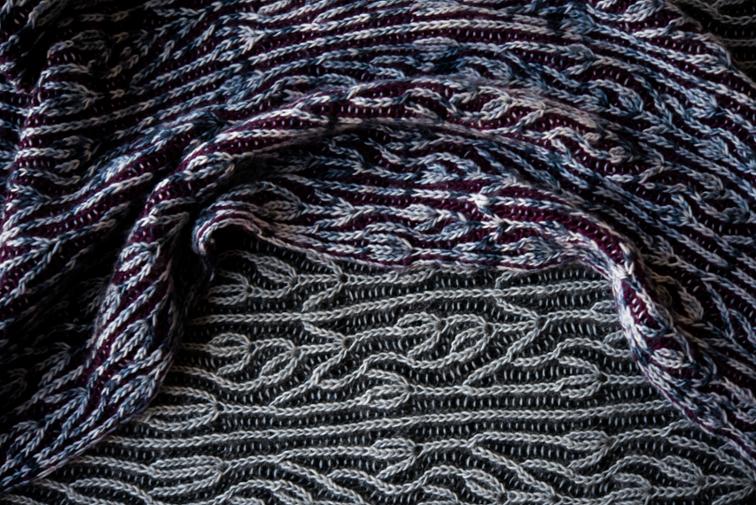
Lesley Anne Robinson’s Provencal Shawl from Modern Brioche Lace
If you’re familiar with brioche and have worked brioche charts before, some of this might be a review for you. If you’re not familiar with brioche, don’t worry! With some practice, brioche lace will become as natural to you as your usual knitting stitches.
Brioche lace charts vs. written instructions
If you’ve worked traditional knit lace before, it’s possible you already have a preference when it comes to a chart vs. written instructions.
Written instructions for brioche lace can get a bit complex, especially on shaping rows. If you’re using the written instructions, here’s a sample of what you might be dealing with:
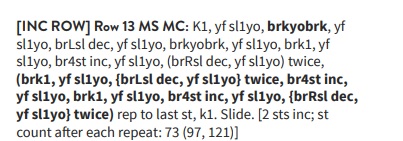
Whoa! It can be hard to follow along, so that’s why we have charts. Some knitters might even switch back and forth between written instructions and charts.
Understanding brioche lace charts
A few things that are helpful to know about brioche lace charts:
Deciphering brioche lace symbols
Some brioche lace chart symbols look pretty similar to traditional lace symbols. The symbol for knitting, for example, is usually just a blank white box.
Other symbols, though, are not quite as intuitive if you’re not used to them. Brioche lace has a lot of decrease and increase symbols. For example:
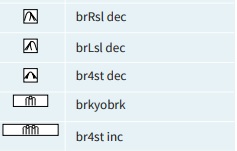
It can be exhausting to glance back and forth to decipher the abbreviations while you’re trying to read the chart, but there are a few things you might notice about symbols to make them easier to read.
Brioche lace increases
For increases, notice that the symbol shows several stitches coming out of one main stitch. That’s a sign that the symbol is for an increase. Take a look at the brkyobrk above, for example. See how it’s like a little umbrella with lots of stitches coming out of it?
Another hint as to which increase you’re using is to count the boxes on the chart.
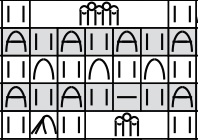
Here we see a brk4st inc at the top of the chart excerpt. That stitch turns one stitch into five stitches, so the symbol takes up five boxes on the chart.
Similarly, the brkyobrk symbol you see in the last row of the chart excerpt turns one stitch into three stitches, so that symbol takes up three boxes on the chart.
Brioche lace decreases
For decreases, many of us mix up right-slanting and left-slanting symbols. But there’s a way to tell the difference without constantly referring to the symbol key. Notice how the brRsl dec shows stitches slanting to the right, while the left-slanting symbol (brLsl dec) shows stitches slanting to the left.
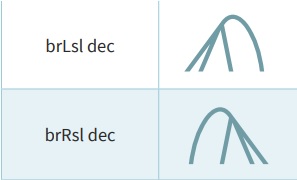
I usually find that after I complete a few rows of the chart, I start to memorize the symbols and stitches without having to look back at the key or the instructions. Just keep knitting until you get the hang of it!
Direction of knitting
Familiarity with symbols is important, but something else that’s equally important is the direction of knitting for a brioche lace chart.
When the chart is in the round, the direction doesn’t change. However, when the chart is in back-and-forth rows, the direction changes depending on which side of the work you’re on.
The chart will usually indicate which side of the row to begin, and some even have helpful little arrows, like this one:

Notice, too, that two rows equals one row. Here, the rows are labeled MS (Main Side) and CS (Contrasting Side). You’ll complete one row with the main color, then slide your work back to where you started to work across with the other color. This chart also specifies which color you’re working with as you begin.
Look out, too, for charts like the one above that have a secret little color coding to help determine which color you’re working with. In this case, the rows that have a white background are worked with MC (Main Color), while the rows with a gray background are worked with CC (Contrasting Color).
Not all charts contain this much information about the side of the work and the color to knit with. Sometimes these rows will alternately be labeled with a and b letters. For example: Row 1a, Row 1b. Row 1a might be worked with the main color, while Row 1b might be worked with the contrasting color. (You might want to jot down a note on your chart so you’ll remember which color to begin with.)

Share tips, start a discussion or ask one of our experts or other students a question.
No Responses to “How to Confidently Read Brioche Lace Knitting Charts”